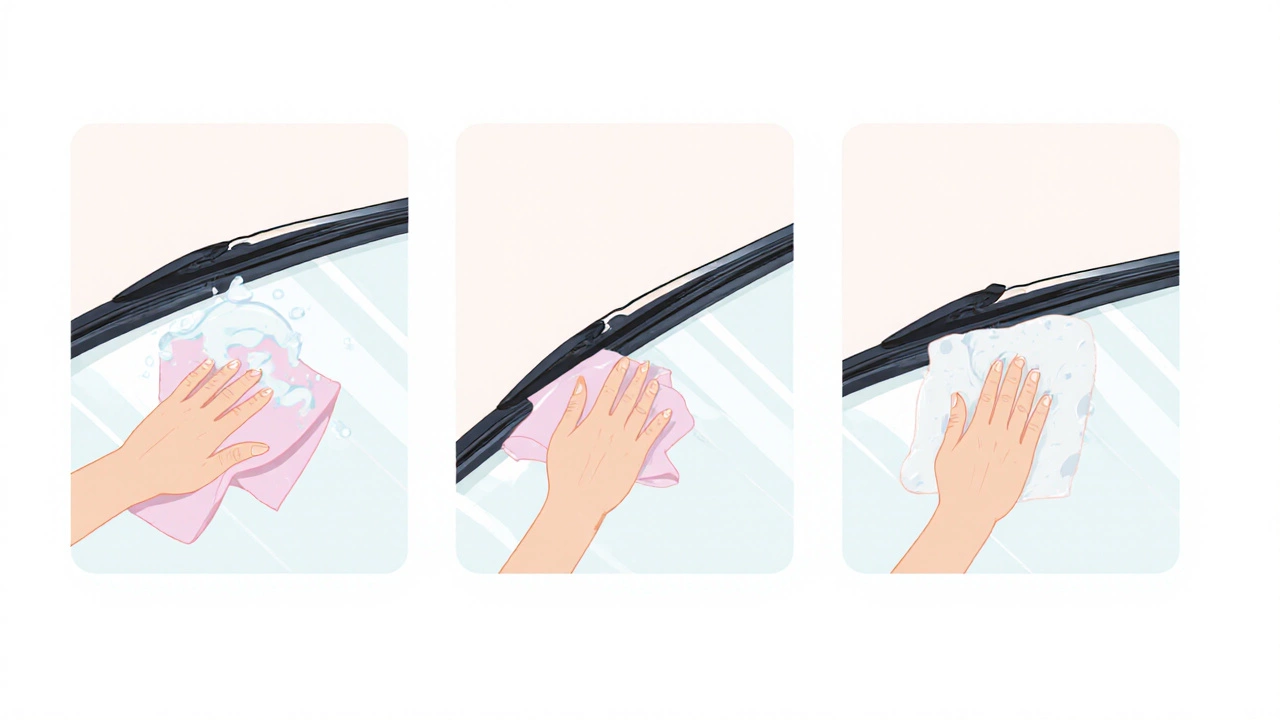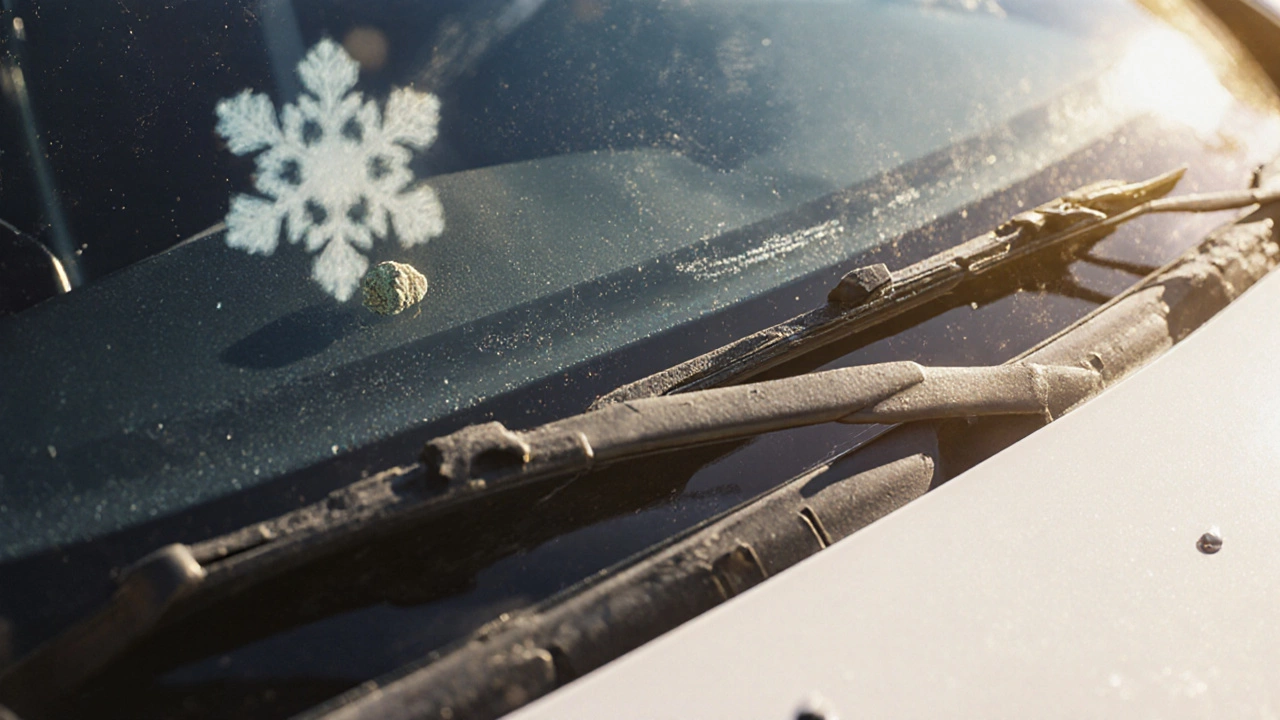Windshield Wiper Blade Lifespan Calculator
Estimated Lifespan
Conventional Blades
Metal frame with rubber edge
- • Best for older vehicles
- • Budget-friendly option
- • Lifespan: 6-12 months
Beam Blades
All-rubber with aerodynamic design
- • Ideal for modern cars
- • Better performance in rain
- • Lifespan: 12-18 months
Silicone Blades
Silicone-infused rubber
- • Excellent in extreme climates
- • Resists UV and cold
- • Lifespan: 18-24 months
Extending the life of your windshield wipers saves money and keeps visibility high. When it comes to keeping your windshield wipers the rubber blades and metal arms that clear rain, snow, and debris from your car’s windshield in good shape, a bit of regular care goes a long way.
What Makes Wiper Blades Wear Out?
Understanding the enemy helps you fight it. The most common culprits are:
- UV exposure: Sunlight breaks down rubber, causing cracks and brittleness.
- Temperature swings: Heat expands the rubber, cold contracts it, leading to delamination.
- Debris impact: Small stones or grit act like sandpaper on the rubber blade the flexible part that actually wipes the glass.
- Improper tension: A loose wiper arm the metal lever that holds the blade can cause uneven wear.
- Using the wrong fluid: Abrasive cleaners eat away the rubber and can stain the car windshield the glass surface that the wipers clear.
Daily Quick Checks (2‑Minute Routine)
Spend a couple of minutes each day, especially after a heavy rain, to spot early signs of trouble.
- Turn the wipers on low speed. If you see streaks, the rubber blade may be glazed.
- Listen for noise. A squeak often means the wiper arm is loose or the blade is worn.
- Visually inspect the blade edge for cracks, splits, or missing chunks.
Addressing these minor issues now prevents a full replacement later.
Cleaning the Blades and Glass Properly
Cleanliness is the backbone of longevity. Follow these steps weekly:
- Lift the blades away from the glass.
- Mix a gentle solution of warm water and a few drops of dish soap. Cleaning solution a non‑abrasive liquid for glass and rubber is safer than commercial windshield cleaners that contain ammonia.
- Using a soft microfiber cloth, wipe each blade from the root to the tip. This removes built‑up grime that can cause micro‑abrasions.
- Wipe the windshield with the same cloth, then dry with a clean one to avoid streaks.
- Lower the blades and run them once on the wet glass to spread any remaining solution evenly.
Never use a wire brush or harsh chemicals; they will accelerate rubber decay.

Choosing the Right Blade Type for Your Vehicle
Not all blades are created equal. Below is a quick comparison of the three most common designs.
| Feature | Conventional | Beam (Flat) | Silicone |
|---|---|---|---|
| Construction | Metal frame + rubber | All‑rubber with aerodynamic shape | Silicone‑infused rubber |
| Best For | Older cars, budget‑friendly | Modern cars, high‑speed rain | Extreme climates, heavy snow |
| Typical Lifespan | 6‑12 months | 12‑18 months | 18‑24 months |
| Price (UK) | £8‑£12 | £15‑£22 | £25‑£35 |
| Noise Level | Moderate | Low | Very low |
If you live in a region with harsh winters, silicone blades are worth the extra cost. For everyday commuting in mild weather, a beam blade gives the best balance of performance and durability.
Seasonal Adjustments - What to Do in Winter
Cold weather is a prime wiper killer. Follow these winter‑specific tips:
- Switch to winter‑rated fluid that contains antifreeze. Washer fluid a liquid mixture that prevents freezing on the windshield helps the blades glide over icy patches.
- Consider a silicone or beam blade with a protective coating; they stay flexible longer in sub‑zero temperatures.
- Before you head out, lift the blades away and spray a thin layer of silicone spray on the rubber. It creates a barrier against snow buildup.
- After a snowfall, clear the bulk of the snow with a soft brush before activating the wipers to avoid abrasive sand‑like grit.
Lubricating the Wiper Arm and Joint
Metal parts can develop rust or seize, causing the blade to chatter and wear unevenly. Every 3‑4 months, apply a light coat of automotive grease a non‑corrosive lubricant for moving parts to the pivot points of the wiper arm. Use a small brush to work it into the joint, then wipe away excess to avoid splatter on the windshield.
Storage and Protection When the Car Isn’t Used
Long periods of inactivity are tough on rubber. If you store your car for weeks:
- Lift the wiper arms away from the glass to relieve constant tension.
- Cover the blades with a breathable cloth to keep dust off but allow moisture to escape.
- Park the vehicle in a shaded or indoor spot to minimize UV exposure.
These simple steps keep the rubber from drying out and cracking.
When to Replace - Signs It’s Time for New Blades
Even with perfect care, blades have a finite life. Replace them when you notice any of these red flags:
- Streaking or missed spots despite clean fluid.
- Visible cracks, splits, or hardened edges on the rubber.
- Constant squeaking or chattering at any speed.
- Excessive wiper arm wear - the metal may become bent or corroded.
Switching to a higher‑grade blade at replacement can also give you a performance boost.
Quick Checklist - Keep Your Wipers Happy
- Inspect blades weekly for damage.
- Clean blades and windshield at least once a week.
- Use proper washer fluid for the season.
- Lubricate wiper arm pivots every 3 months.
- Lift arms when the car sits idle for more than a month.
- Replace blades every 12‑18 months, or sooner if worn.
Frequently Asked Questions
How often should I replace my windshield wiper blades?
Most experts recommend a replacement every 12‑18 months for beam or silicone blades, and every 6‑12 months for conventional blades. Climate, mileage, and cleaning habits can shorten that window.
Can I use regular car wash soap to clean wiper blades?
A mild dish‑soap solution is safe and effective. Harsh detergents or ammonia‑based cleaners can degrade the rubber and should be avoided.
Do silicone blades really last longer?
Yes. Silicone‑infused rubber resists UV breakdown and stays flexible in extreme cold, often lasting up to two years under normal use.
Why do my wipers make a squeaking noise?
Squeak usually means the blade edge is hardened, the arm tension is wrong, or the windshield is dirty. Cleaning the blade and checking arm tension often resolves the issue.
Is it okay to use winter windshield washer fluid year‑round?
Winter fluid contains antifreeze, so it works anytime, but it can be slightly more expensive. Using it year‑round isn’t harmful, just unnecessary unless you live in a cold climate.

